
Citroën C4 Cactus Hatchback (2014-2018) interior, tech and comfort
.jpg)
- Quality is rather hit and miss
- Infotainment controls everything on the car
- Front seats are comfortable
How is the quality and layout?
When Citroen was designing the Cactus, it was going through some stylistic changes. The firm switched to an incredibly minimalistic dashboard layout across its entire range of cars. All you get to play with are two digital displays (a speedo and multi-function touchscreen) and a thin row of six buttons.
Primarily, the front cabin is interesting and well-designed, with plenty of neat details, such as the suitcase-inspired glovebox and leather-strap door handles. The material quality leaves a little to be desired, though, especially on the door cards. But when a car’s this cheap to buy used, we can’t grumble too much.
And while pop-out rear windows on anything with more than two-doors usually feels like a cop-out, on the Citroen there’s no such stigma. The pared-back design is entirely in-keeping with the car’s character, especially when you consider these contribute a loss of 11kg from the overall weight.
Infotainment and tech
The centrally-located touchscreen controls everything in the Cactus’ interior. Climate settings, radio stations, sat-nav instructions – the lot. It stands proud of the dash, like a tablet, but unfortunately isn’t removable. It does feature sharp and clear graphics though – even if some detailing looks a little fiddly on the sat-nav function – and is reasonably quick to respond to inputs.
We would like it to be a little more intuitive in some of the menu controls though, but it’s not at Krypton Factor levels of confusion and after little time in the car we’re sure owners would master it.
.jpg)
There’s no rev-counter behind that slightly less than round steering wheel, but as the car isn’t a performance variant that matters not.
Comfort
- Surprisingly good driving position
- Brilliant suspension soaks up bumps well
- Automatic available with a front bench seat
There’s no reach adjustment for the steering wheel which, when we first encountered it, made us turn our noses towards the sky. We thought we’d never find a comfortable driving position – but that’s simply not the case. The driver’s seat offers plenty of height adjustment, so you soon find yourself sitting with perfect poise.
This is the era in which Citroen re-established itself as a purveyor of comfortable cars – and in its day, the C4 Cactus led the class. At the time, we we’re pleased to say the firm had struck gold once again.
Despite using a conventional suspension system, rather than the trick hydropneumatic system the firm is famous for, the Cactus simply glides and floats over bumps, be they large or small, and you can’t help but settle into the same relaxed gait as the car. Speed bumps aren’t quite dealt with as if they don’t exist, but the C4 Cactus makes short work of hopping over them.
.jpg)
A big part of why the Cactus rides so well is its lower kerb weight. It’s around 200kg less than the equivalent C4, thanks to extensive use of aluminium. The heat-treated glass in the panoramic also roof does without a blind, losing 6kg.
There’s no point in driving quickly though, not least because doing so simply highlights considerable body roll around corners as well as allowing plenty of engine noise to enter the cabin from the screaming thrum of the three-cylinder petrol or diesel engines.
Avoid the ETG automated manual gearbox if you can as well, the lurching between ratio changes proves anything but comfortable when on the move.
Not only does this family-focused junior SUV feature a pair of seats (or bench in the automatic models) up front, that genuinely do resemble armchairs – for comfort, looks and material choice.


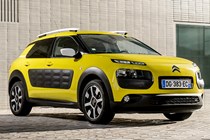
.jpg)
.jpg)
.jpg)
.jpg)
.jpg)
.jpg)
.jpg)
.jpg)
.jpg)
.jpg)
.jpg)
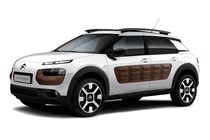
.jpg)
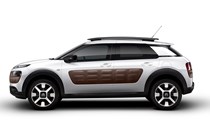
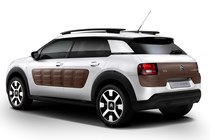

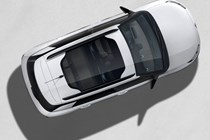
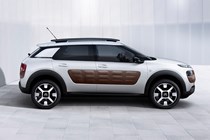
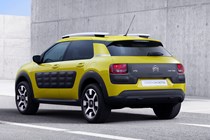
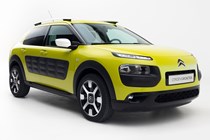
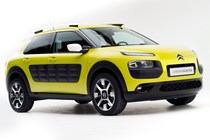
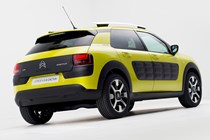
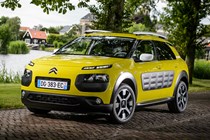
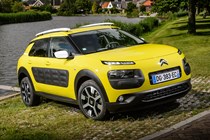
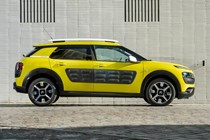
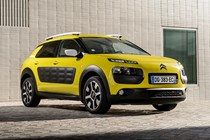
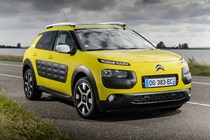
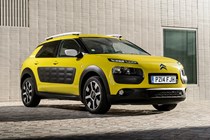
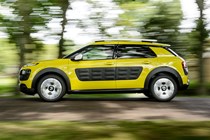


.jpg)
.jpg)
.jpg)
.jpg)
.jpg)
.jpg)
.jpg)
.jpg)
.jpg)
.jpg)
.jpg)
.jpg)
.jpg)
.jpg)
.jpg)
.jpg)
.jpg)
.jpg)
.jpg)
.jpg)
.jpg)
.jpg)
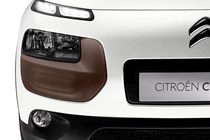
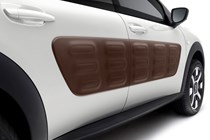
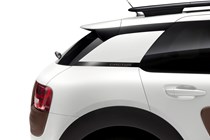
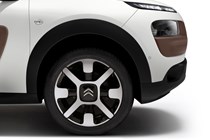


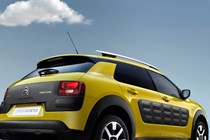
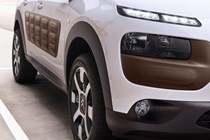
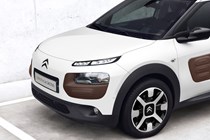
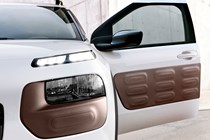

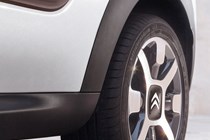
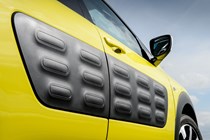

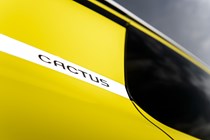
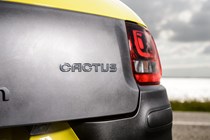
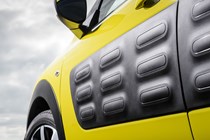
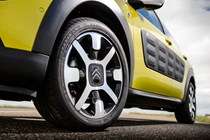
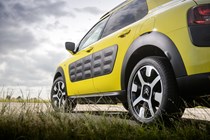
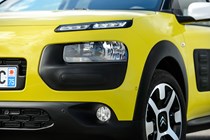
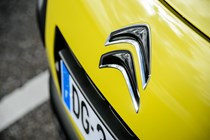
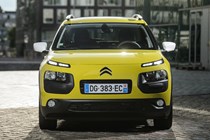
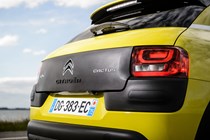
.jpg)
.jpg)
.jpg)
.jpg)
.jpg)
.jpg)
.jpg)
.jpg)
.jpg)
.jpg)
.jpg)
.jpg)
.jpg)
.jpg)
.jpg)
.jpg)
.jpg)
.jpg)
.jpg)
.jpg)
.jpg)
.jpg)
.jpg)
.jpg)
.jpg)
.jpg)
.jpg)
.jpg)
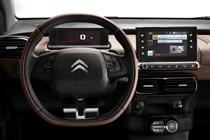
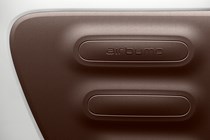
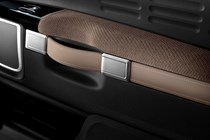
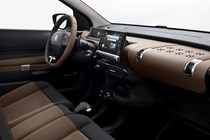
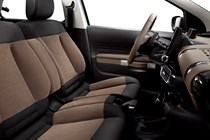
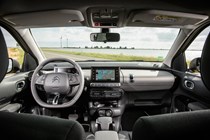
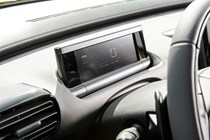

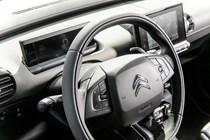
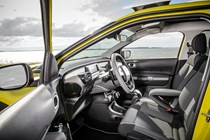
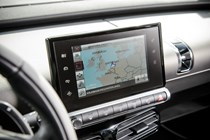
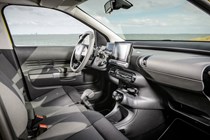
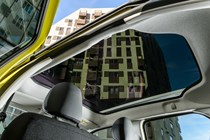
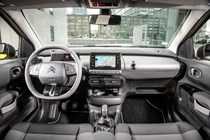
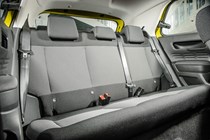
.jpg)
.jpg)
.jpg)
.jpg)
.jpg)
.jpg)
.jpg)
.jpg)
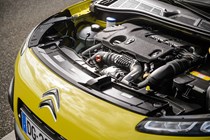
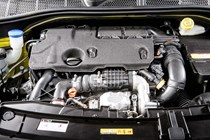

.jpg?quality=50)
.jpg?quality=50)
.jpg?quality=50)
.jpg?quality=50)
.jpg?quality=50)
.jpg?quality=50)
.jpg?quality=50)
.jpg?quality=50)
.jpg?quality=50)
.jpg?quality=50)
.jpg?quality=50)

.jpg?quality=50)


















.jpg?quality=50)
.jpg?quality=50)
.jpg?quality=50)
.jpg?quality=50)
.jpg?quality=50)
.jpg?quality=50)
.jpg?quality=50)
.jpg?quality=50)
.jpg?quality=50)
.jpg?quality=50)
.jpg?quality=50)
.jpg?quality=50)
.jpg?quality=50)
.jpg?quality=50)
.jpg?quality=50)
.jpg?quality=50)
.jpg?quality=50)
.jpg?quality=50)
.jpg?quality=50)
.jpg?quality=50)
.jpg?quality=50)
.jpg?quality=50)























.jpg?quality=50)
.jpg?quality=50)
.jpg?quality=50)
.jpg?quality=50)
.jpg?quality=50)
.jpg?quality=50)
.jpg?quality=50)
.jpg?quality=50)
.jpg?quality=50)
.jpg?quality=50)
.jpg?quality=50)
.jpg?quality=50)
.jpg?quality=50)
.jpg?quality=50)
.jpg?quality=50)
.jpg?quality=50)
.jpg?quality=50)
.jpg?quality=50)
.jpg?quality=50)
.jpg?quality=50)
.jpg?quality=50)
.jpg?quality=50)
.jpg?quality=50)
.jpg?quality=50)
.jpg?quality=50)
.jpg?quality=50)
.jpg?quality=50)
.jpg?quality=50)















.jpg?quality=50)
.jpg?quality=50)
.jpg?quality=50)
.jpg?quality=50)
.jpg?quality=50)
.jpg?quality=50)
.jpg?quality=50)
.jpg?quality=50)

